Darius Cozmic Collection Console Review

 By Kevin Mitchell | Jun 27, 2020
By Kevin Mitchell | Jun 27, 2020
Although the Darius series began life in the arcades, Taito's popular shoot 'em up series slowly made its way to home consoles. Darius Cozmic Collection Console features nine releases from the early nineties, including fan-favorites and a couple of obscure titles spread across the 8-bit and 16-bit era. In the arcade, Darius featured a unique cabinet with a triple-screen setup (and later a double-screen variant), producing an ultra-wide display perfect for two players playing side-by-side. With televisions/monitors at home being limited to 4:3 (at the time), porting these titles required redrawing character sprites and other changes for the game to work within the smaller screen real estate.
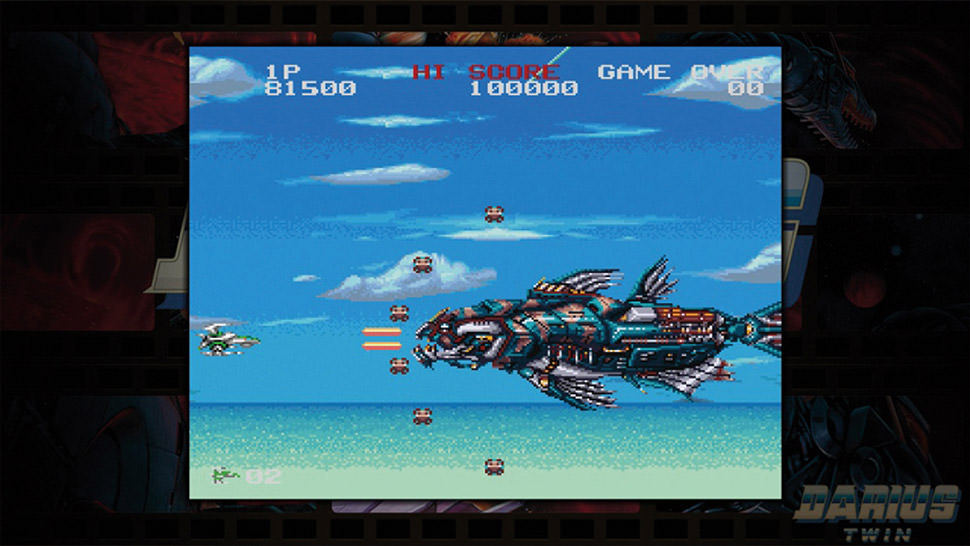
After the Darius system came under siege by Belsar's invasion forces, hope seemed all but lost for the peaceful civilization. Their saving grace came in the appearance of the Silver-Hawk, a spacecraft created by the Amnelian using Thiima technology. The backbone of Belsar's forces consists of massive robotic battleships, believed to be sentient. Their designs match known marine biology, namely octopuses, fish, crustaceans, sea horses, and the recurring boss King Fossil (and face of the series), resembling a coelacanth. Darius Cozmic Collection Console features fully customizable controls per game, smoothing options, quick save/load, and the standard array of display settings found in these types of collections. The aspect ratio can stay true to the original release, be altered to pixel perfect, fit to screen to maximize height, or stretched to fit across a 16:9 display—if you have a chaotic evil soul.
The first game in the series, Darius, never received an exact port to popular home consoles around its height in popularity. Instead, the PC Engine (released in the US as the TurboGrafx-16) received a port, Super Darius, that stayed true to the original, releasing on CD-ROM and even using sound effects and music from the PCB. It included all bosses from the original, including those cut from the arcades, bringing the total to 26. However, some of those would eventually be added to Darius II. A downgraded port released later that year in 1990 on a HuCard, known as Darius Plus. This version had some bosses removed and others altered from where they appeared in the original version, as only sixteen—ten fewer than Super Darius—were included.
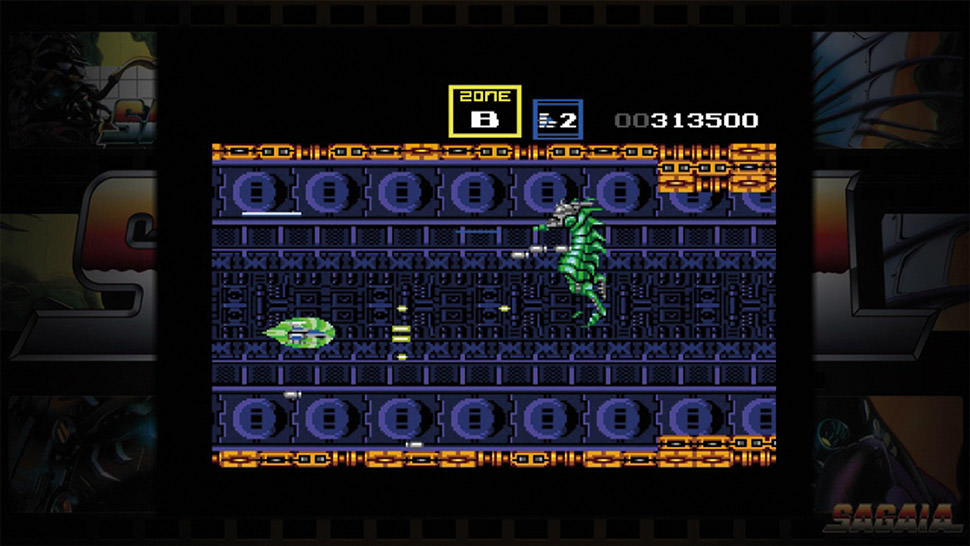
As a shoot 'em up, players take control of a Silver-Hawk, navigating through scrolling stages and destroying enemy fighters, ground vehicles, turrets, and more. Your ship is equipped with two different upgradable attack weapons: the missile, a forward-facing gun, and the bomb, which drops from the craft. The control scheme features buttons mapped to activate each weapon separately, discharge both weapons simultaneously, or act as a customized turbo button (dependent upon the game). Power-ups are obtained by destroying specially colored enemy ships or entire formations. The process of gaining power-ups varies, as does what is gained from each colored power-up. Generally, red represents missiles (the forward-firing weapon), green for bombs, and blue for armor. However, later games alter this approach, and the handling of power-ups becomes unique while adding additional types. Power-ups reset upon death; however, the games feature a tier system. Reach the next tier, and you will return to that level. Successfully navigating through a zone leads to the boss area. These massive battleships are not only powerful but resilient. If you overcome their massive firepower and defenses, you'll be presented with branching paths, which become more numerous as you progress. For example, a game may have 28 different zones, but you'll only see seven in a single playthrough.
The only other PC Engine title in the collection, Darius Alpha, is a bit of an enigma. It was used as a limited promotion and wasn't available for direct purchase. Instead, it was a mail-order exclusive for those who purchased both previously released games on the PC Engine. Only 800 copies were produced, making it one of the rarest games in existence. Like Darius Plus, Alpha featured SuperGrafx support, which reduced the considerable flickering that plagued many titles (you can toggle this in the collection). The game played much like the hidden boss rush mode from Super Darius, except it only features the bosses from Plus, and includes an optional 4-minute time trial mode.
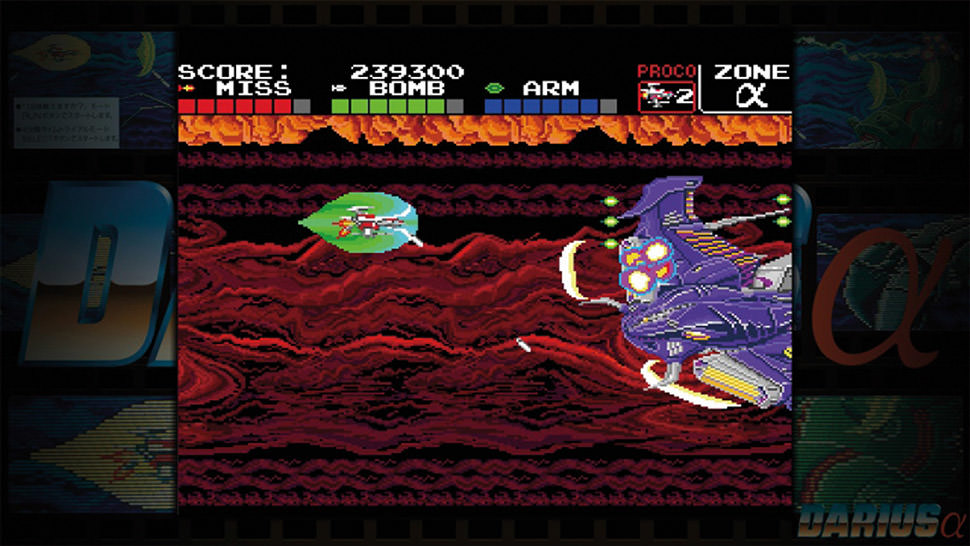
The arcade sequel, Darius II, made its way to home consoles, releasing on the Mega Drive as faithfully to the original as possible. Darius II was still a multi-screen arcade game, so extra work went into redrawing the sprites to work on televisions. Two-player co-op was removed, but players could select between two pilots: Proco Jr. and Tiat Young. The North American release on the Sega Genesis renamed the series to Sagaia, and as the first game didn't reach these shores, it became the series' debut here. This incorrect numbering of games was quite frequent when not all titles in a franchise were released outside Japan. Due to the Sega Master System's popularity in Europe, an 8-bit port was developed and released as Sagaia a year after the Mega Drive release. The 8-bit version was heavily modified to work with the aging (and weaker) console, removing some stages and featuring only single-player. While serviceable, it lacks the charm and appeal of the 16-bit version and features much smaller bosses and weaker animations and visuals.
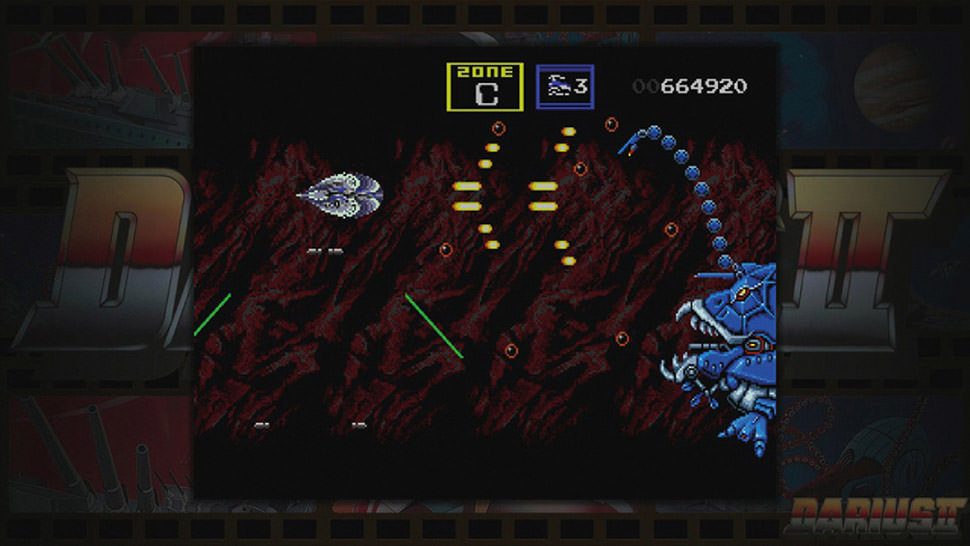
Four titles in the collection graced Nintendo platforms: Darius Twin (both Japanese and North American releases), Darius Force, and Super Nova. Darius Twin is the first original entry in the series released on consoles. As it wasn't an arcade port, it was designed for a single-screen experience and supports cooperative play. The game played much like Darius II, with many similar designs. However, upon dying, you don't lose any of the Silver-Hawk's power-ups, and you continue exactly where you died, though the game lacks continues. It also slightly alters the power-up colors and adds a special one that switches the primary weapon's shot style to match Darius and Darius II. You'll still play through seven zones, but not every stage includes optional branches. As the Japanese version released only months into the Super Famicom's life, the localized version, which released later, had time to improve the sound quality. From the music to the level design and intense enemy ship formations, Darius Twin is one of the best games in the collection.
The fourth game in the series, Darius Force, significantly alters the series' gameplay formula. There are three separate ships to choose from, with two based on the first and second games in the series, and the third being an original design. The enemy boss designs have been expanded to include dinosaurs. Firing both weapons simultaneously produces a weaker shot, but the red power-up improves both weapons instead of each having a different collectible. The option for two-player co-op is missing from Darius Force. In other Darius games, once you die, you respawn where you are, provided you have additional lives. In Darius Force, you are sent back to a checkpoint, which may be the beginning of the zone. While collecting armor power-ups gives you a better chance of survival, being sent back to the start is quite a departure from the series. The lack of co-op and the inclusion of the checkpoint system hurts the Darius experience, making it one of the weaker releases in the collection.
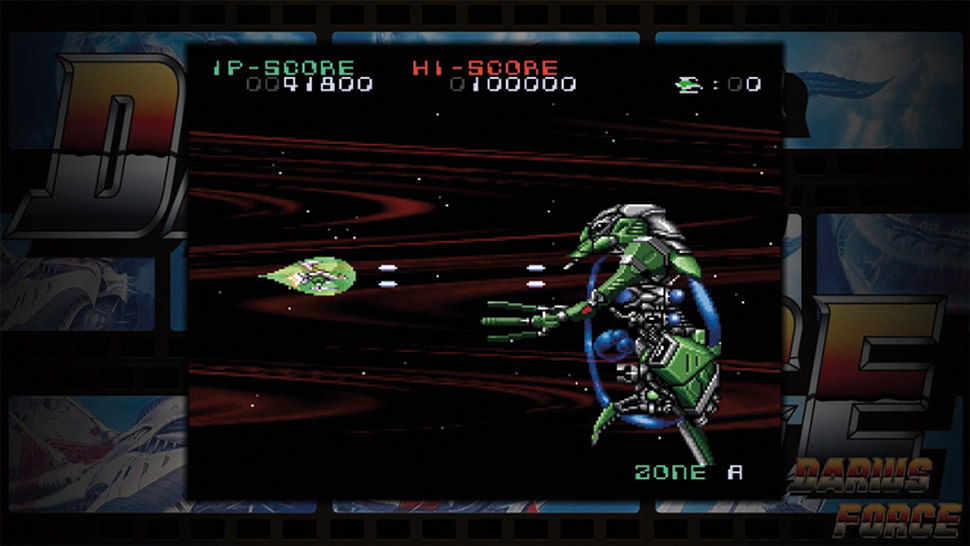
Simply Put
Darius Cozmic Collection Console features a robust selection of the various Darius ports; however, there are some questionable omissions. The excellent port of Darius included in the Sega Genesis Mini, which was based on a build that was initially canceled, is absent. While understandable as it didn't have a home release in its era, it remains one of the best ports of the original. The inclusion of games from three different regions was a smart choice, especially considering how popular the Sega Master System remained in Europe well into the Mega Drive's lifetime. It certainly must have been quite a feat to convert/port the arcade games to home consoles over twenty years ago.
Note: Darius Cozmic Collection Console was reviewed on PlayStation 4. A digital copy of the game was provided by the publisher/developer.




